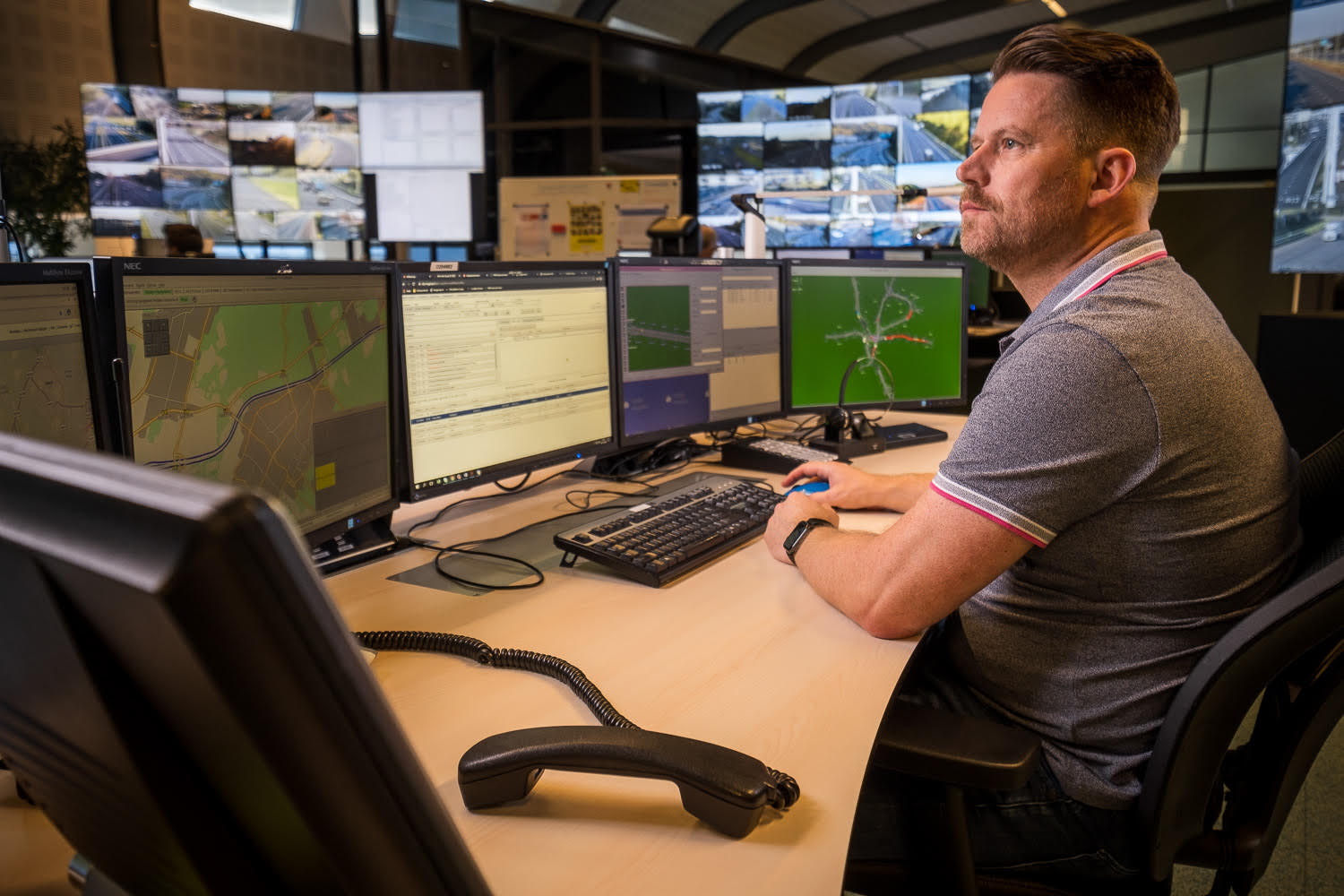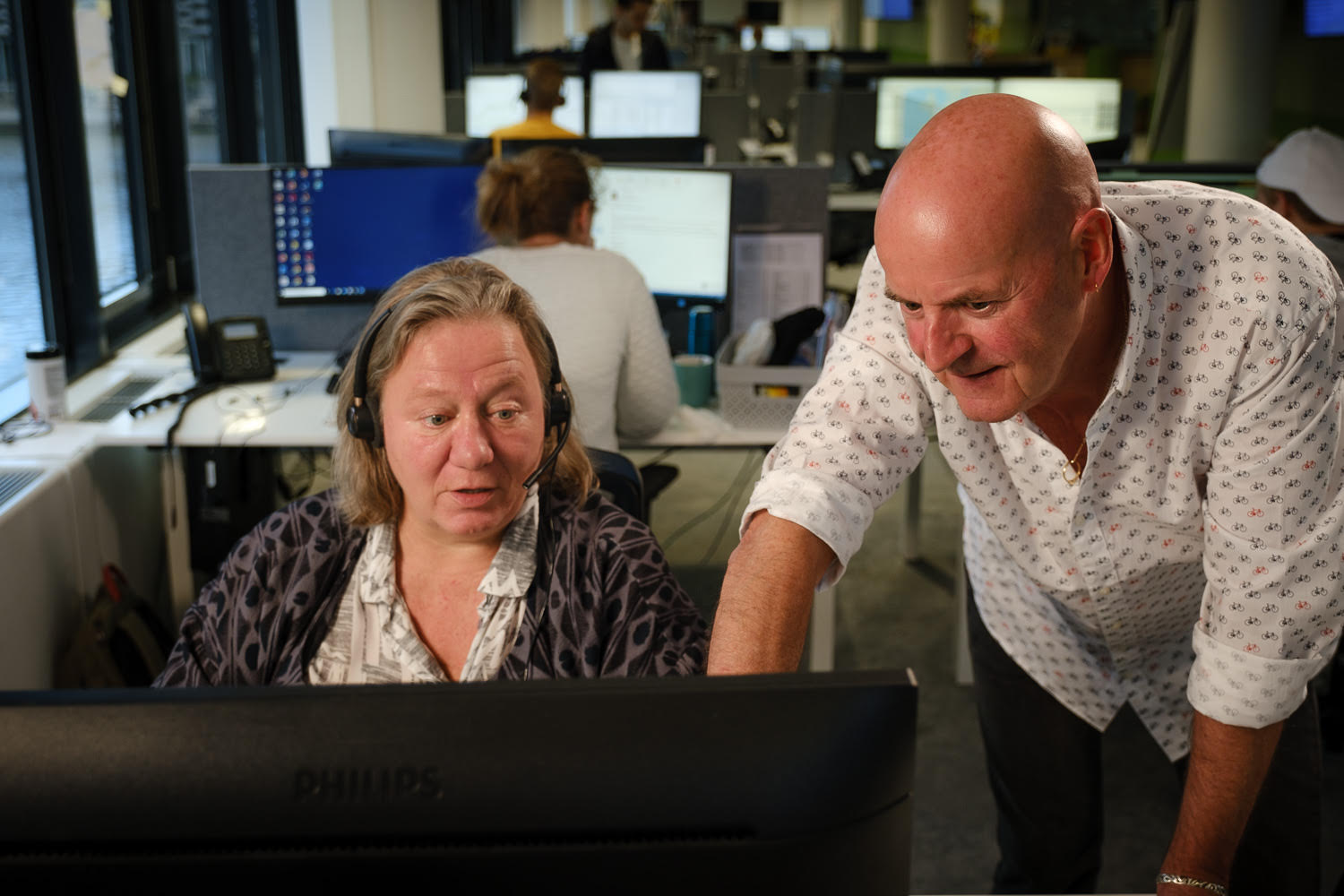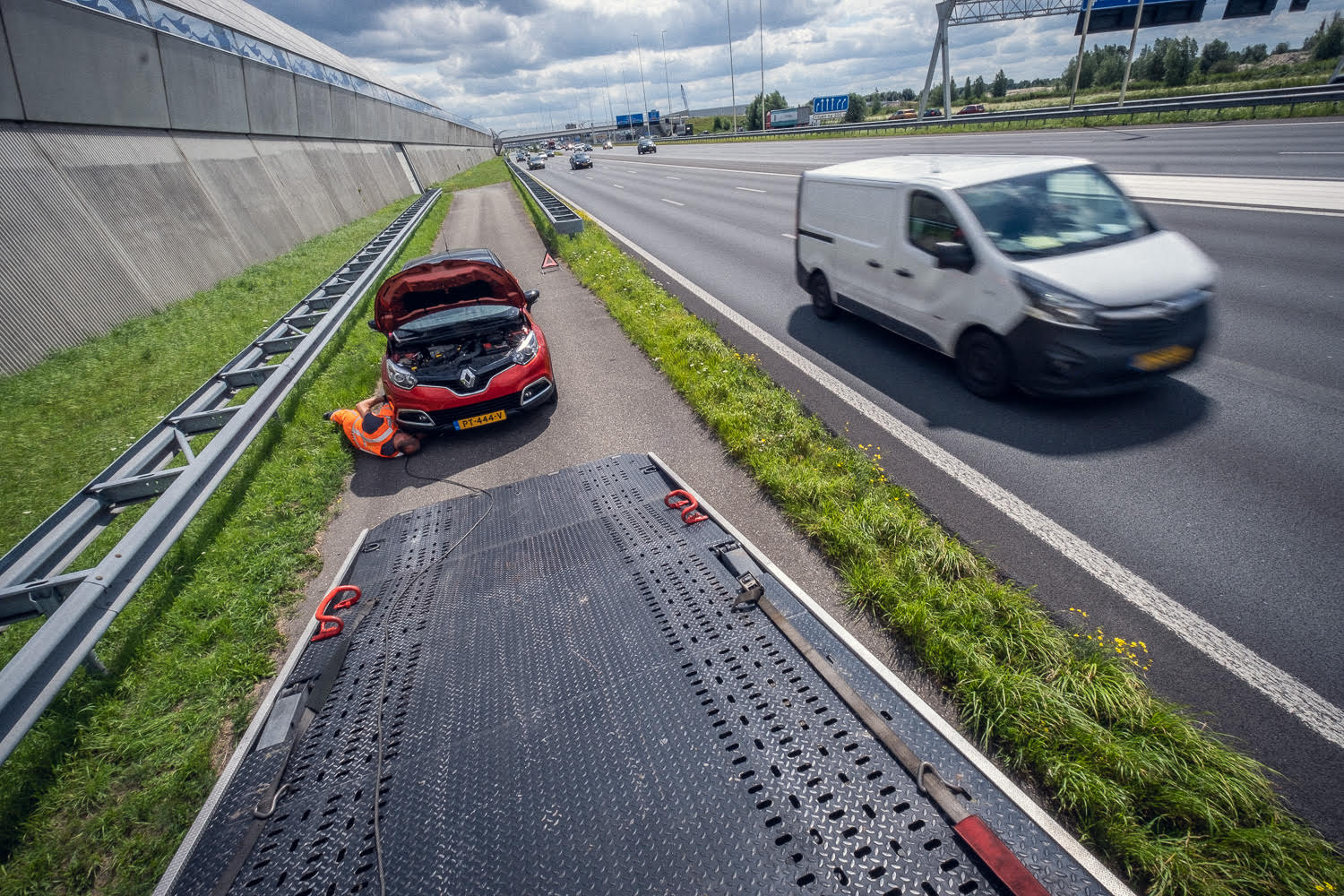Rijkswaterstaat to report incidents electronically to the LCM
Monday 3 August 2020
Since 7 July 2020, Rijkswaterstaat has been sending electronic incident reports to IMN's National Central Reporting Point (LCM). These reports are to replace reporting by telephone, the procedure that has been in use until now. It is a trial that is being carried out by the Central Netherlands Traffic Control Centre. This is Rijkswaterstaat's 'nerve centre', which monitors the primary road network in the province of Utrecht and the surrounding area. The new procedure will speed up deployment of a recovery operator by around one minute per incident report.

Wout Buikema of the Central Netherlands Traffic Control Centre on 29 July 2020 with, on the third screen from the right, the application for entering and sending electronic incident reports
At present, accidents and hazardous breakdowns on the primary road network are almost always reported to the LCM by telephone. The LCM receives most reports of incidents on the primary road network from three sources: the five Rijkswaterstaat traffic control centres, the ten police operations centres (control rooms) and the ANWB control centre. The reports are made with a single, often very brief, telephone call. In most cases, the information provided is limited to the location (hectometre marker) and the nature of the incident: an accident or breakdown removal.

Edwin Kiewik and Sanny van Haperen of SOS International processing an incident report on 29 July 2020 at IMN's National Central Reporting Point
Of the sources reporting incidents, Rijkswaterstaat is the first to make the switch to automated reporting. Incident reports are logged at the traffic control centre and then forwarded to the LCM as a data message at the touch of a button. There they are converted into instructions for the recovery operator, also an automatic process. The recovery operator then receives a message on his smart phone or computer. This is done using the Electronic Reporting System for Incident Management that was introduced in 2013.

Peter Schuurmans of BCU performing a breakdown removal on the A2, between Amsterdam and Utrecht (hectometre marker A2 Li 55.2)
For the time being this is a trial at one of the five traffic control centres. The aim of the trial is to develop a method which guarantees that the recovery operator is given usable instructions in each case. For some incidents it is important that the recovery operator is notified of specific details of the operation to be carried out. This may mean further information on the location of the vehicle to be recovered, such as an emergency stopping lane on the left of the carriageway or the access road to a filling station. If the recovery operator does not have this information, there is a greater risk of him driving past the incident before he sees how to reach the site of the incident. In the event of a pile-up it may be necessary for the LCM to ask the operator to use more than one recovery vehicle. And if the vehicle to be recovered is in a ditch or on the other side of a crash barrier, the operator must be aware of that so that he can send a vehicle with a winch to the site.
Electronic reporting is not entirely new. Since the start of 2019 Stichting IMN has been working with a system for Electronic Detection of Accidents. This system identifies incidents by analysing sudden reductions in traffic speed. These incidents are detected electronically before being forwarded to the LCM and, from there, to the recovery operator. At present, the Electronic Detection of Accidents system identifies around ten incidents per day. And now the system is getting a 'big brother' in the Central Netherlands Traffic Control Centre that identifies and alerts the LCM of around forty incidents per day.